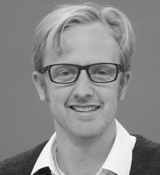By: Rob Hoehn
Every year, IdeaScale convenes a gathering of innovators from all over the world who share their best practices in managing and delivering on new ideas.
This year we heard from a number of leading organizations including Doctors Without Borders, the FDA, New York University, Wolters Kluwer, and many others. And what we heard were not just the successes that other organizations need to keep pace with, we also heard where innovators are prioritizing their learning for the future, as well.
So what do we know?
Crowdsourcing is a Virtuous Cycle (when done correctly)
Organizations thrive on well-developed ideas. Employees and customers want to feel heard, empowered, and impactful. When organizations organize a successful crowdsourcing program, not only do they solve problems (saving money, time, efficiency, even lives!), but they create goodwill in their communities, pride in their staff, new career opportunities, and a new culture where anyone can source a solution. As one attendee put it “everyone needs programs like these.”
Comprehensive Rolling ROI
Two years ago, metrics were not a key concern for attendees at our innovation conference. Some were measuring their program success; some weren’t. Some attendees had dedicated KPIs, some didn’t. This year—everyone wanted to see how progress was measured. But there was a great deal of discussion about metrics. Which metrics matter (time saved? Revenue generated? Employee sentiment? All of these?) And there was also a bunch of discussion about how initial metrics are just about potential and estimates, launch metrics are another thing, and long-term contributions to the business or community is yet another touchpoint for measurement. Successful innovators will need to be able to check in and report back over time to develop a holistic picture of innovation success.
Program Longevity
Many programs rely on passionate people who can organize, communicate, and foster connection. These champions can move mountains when they are working with the power of the crowd. However, what if that champion leaves? Does the program continue? The best innovation programs repeatedly deliver results no matter who is in charge. This requires shared ownership, an iterative process, comprehensive training, the demonstration of innovation as an embedded company value, and more.
Aligning Energy to Resources
One of Open Nation’s speakers, the Queensland Police, spoke particularly elegantly on this topic. If you’re speaking to a wide range of people, you’ll get a sense what they care most about and then you have to go to the gatekeepers of your organization that are working on solving the problems that people care about and offer them new resources. Essentially, you become matchmakers for problem solving. Likely if there’s a problem out there, someone is working on solving it. You just have to introduce the two to one another.
To learn more about innovation leaders and their crowdsourced innovation programs, download their presentations from Open Nation 2018 here.
By Rob Hoehn
About the author
 Rob Hoehn is the co-founder and CEO of IdeaScale: the largest open innovation software platform in the world. Hoehn launched crowdsourcing software as part of the open government initiative and IdeaScale’s robust portfolio now includes many other industry notables, such as EA Sports, NBC, NASA, Xerox and many others. Prior to IdeaScale, Hoehn was Vice President of Client Services at Survey Analytics.
Rob Hoehn is the co-founder and CEO of IdeaScale: the largest open innovation software platform in the world. Hoehn launched crowdsourcing software as part of the open government initiative and IdeaScale’s robust portfolio now includes many other industry notables, such as EA Sports, NBC, NASA, Xerox and many others. Prior to IdeaScale, Hoehn was Vice President of Client Services at Survey Analytics.
